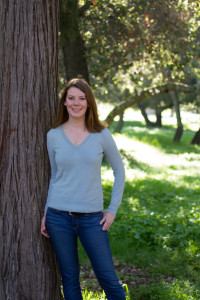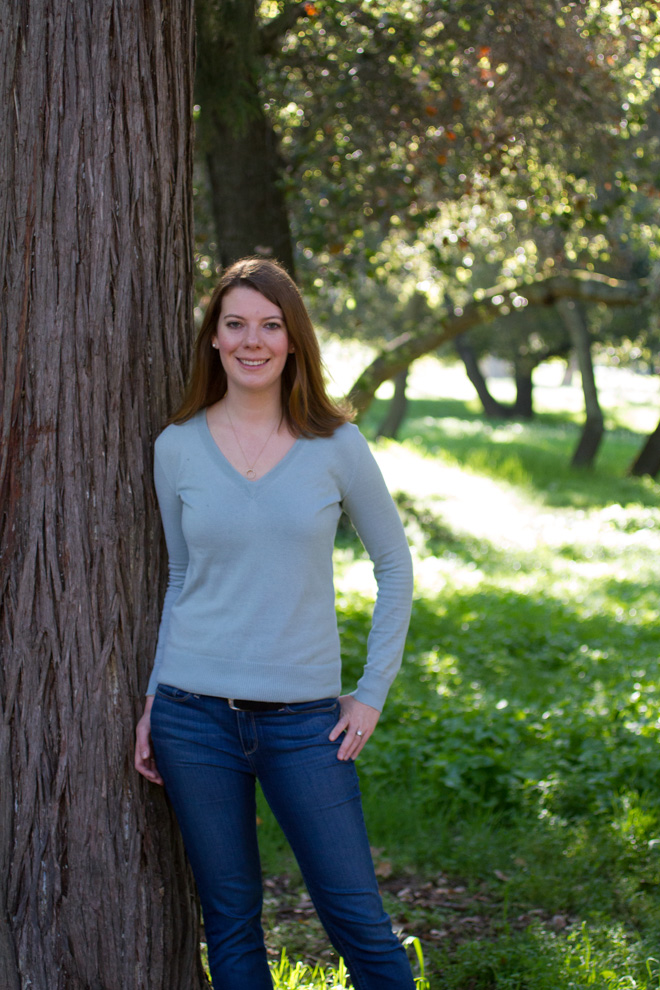Anna Tuchman is a fifth-year Ph.D. student focusing on quantitative marketing within the Marketing Department at the Stanford Graduate School of Business. In this edition of Glam Grads, The Daily talked with Tuchman about her dissertation research on e-cigarette advertising and her life beyond Stanford.
The Stanford Daily (TSD): What do you do in your research regarding quantitative marketing?
Anna Tuchman (AT): Quantitative marketing as a field is basically studying how firms and consumers interact. We use a lot of tools based on economic theory and analysis to analyze large data sets to analyze firm and consumer behavior.
TSD: Do you focus more on big data or on the psychological side?
AT: Within marketing, there are two different sub-fields. One is more on the psychology side. I’m more on the quantitative side, which is more looking at large data sets and doing statistical analyses on the data.
TSD: What are you specifically researching for your dissertation?

AT: For my dissertation, I’m looking at this policy question of what role e-cigarette advertising [plays] in the e-cigarette market and its impact on demand for traditional cigarettes. Tobacco cigarette advertising has been banned on TV and radio since 1971, but there is currently no regulation on e-cigarette advertising.
What is interesting is that in the past few years, the big tobacco companies have entered the e-cigarette market. So, this means that Philip Morris, Altria, the producers of Marlboro cigarettes, can’t advertise Marlboros on TV, but they can market their e-cigarette brand, Mark-Tech. So, it’s this sort of difference in the regulatory environment that prompted this research question of what are the incentives of these firms to advertise, and what are the roles this advertisement is playing in the market and what are the policy implications here. Do we see evidence this advertising is increasing demand for tobacco cigarettes, in which case the policy makers might impose a similar ban – banning e-cigarette advertising – or do we see e-cigarettes as a substitute in which people are switching away from tobacco cigarettes to e-cigarettes? [If so] this can be more of a good thing.
TSD: Have you been looking at other countries for your research?
AT: For this specific analysis, I am using only data from the U.S. I am focusing on the U.S. market, but I know that there are a lot of differences across countries taking different stances against e-cigarettes. Some countries have banned e-cigarette products in general. For instance, in Singapore, you cannot buy e-cigarettes at all. Other countries have chosen to allow e-cigarettes as a product but ban e-cigarette advertising. The British Health Organization had just finished a study they conducted, and they concluded that e-cigarettes are a healthier alternative to cigarettes. Their proposal to the British government is that doctors should prescribe e-cigarettes to smokers to help them quit smoking. Specifically, the data I’m looking at is within the U.S., but it is interesting to keep eye an out for the global perspective and see how other countries are thinking about this question.
TSD: Is there a lot of contact between other groups studying cigarettes?
AT: Researchers in other countries are studying e-cigarettes, but they are studying other areas, such as clinical research, such as what are the health effects of e-cigarettes, how they compare to tobacco cigarettes as well as the regulatory effects. The way the field interacts is through publishing papers and reading those papers, but I don’t know if there are specific cross-country collaborations going on.
TSD: How did you first hear about Stanford, and why did you decide to come here?
AT: I did my undergrad in the University of Pennsylvania in math and economics. I was thinking about applying to Ph.D. programs, but I objectively wanted to get some work experience before doing that. Therefore, I moved out to San Francisco and worked at an econ consulting firm for two years. This was a really good work experience because I was getting a real, industry-type job, but, at the same time, was interacting with people who had completed masters’ and Ph.D.’s in econ and related fields. I was able to learn from them their experiences, and that confirmed my desire to pursue a Ph.D. in marketing.
Simply, why Stanford? Stanford, in my opinion, has the best quantitative marketing department in the country, so it was naturally a great fit. I also love living in the Bay Area and loved being able to stay around.
TSD: Aside from research, what other activities do you do at Stanford?
AT: I’m not really active in student clubs, but after I completed my initial coursework for the Ph.D. – my husband is from Greece and in order to be able to better communicate with his family – I started taking Greek lessons in the special languages department here. This has been really fun for me, and a great way to break out of the business school bubble a bit. I have met other Ph.D. students from other disciplines, as well as other undergrads in disciplines I would have otherwise never have encountered.
TSD: What are your future plans after getting your Ph.D.?
AT: I will be graduating in June, and after graduating, I’ll be joining Kellogg School of Management as a professor this summer.
This interview has been lightly condensed and edited.
Contact Christina Pan at [email protected].
